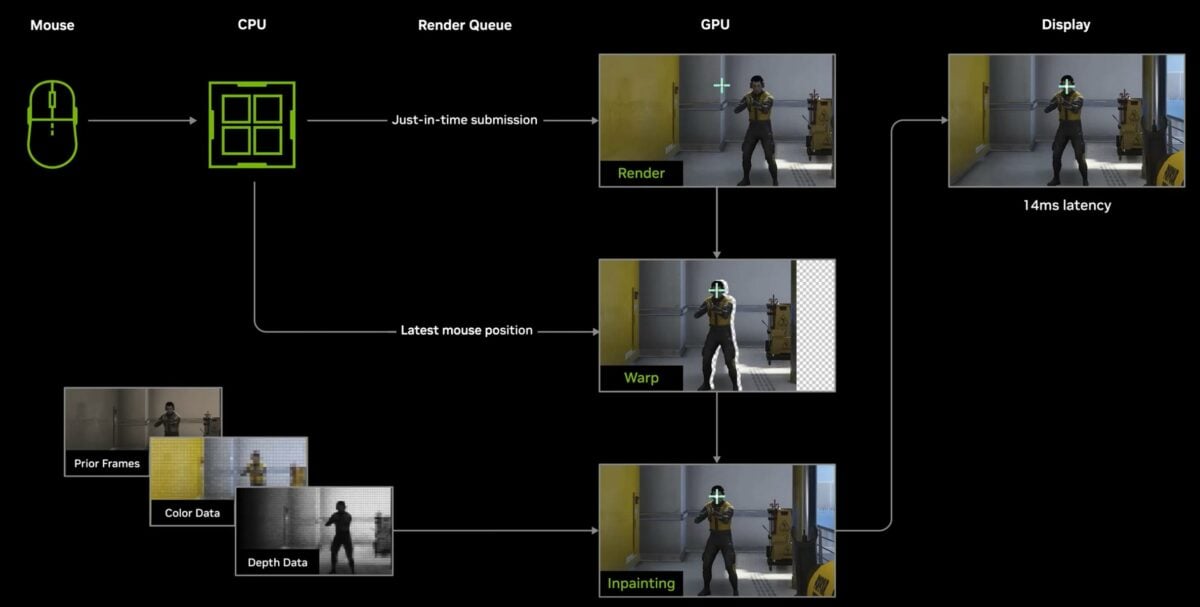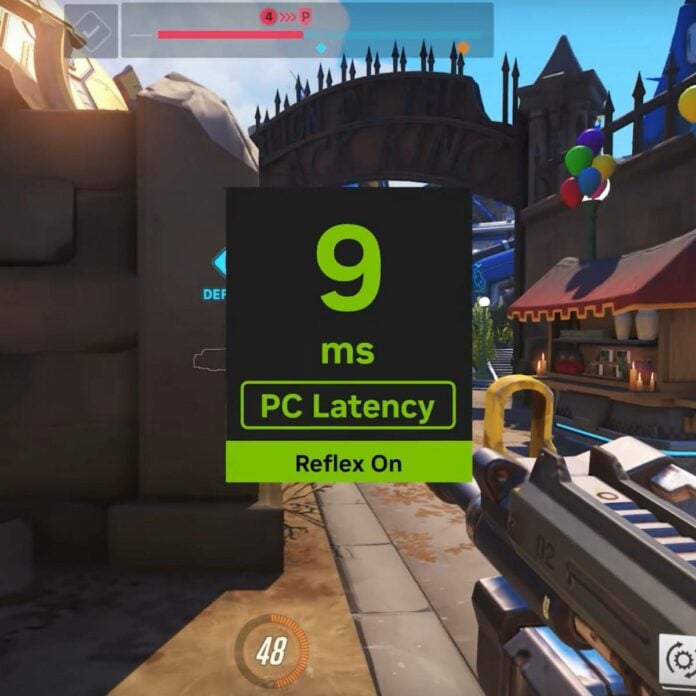Nvidia held a presentation during Game Developers Conference (GDC 2025) in which it showcased its latest graphics technologies to game developers. Among these, we find Neural Materials, which aims to overcome engine limitations by using AI for data compression, Mega Geometry (which optimises the API for ray tracing operations), and today’s star: the latency-reducing Reflex 2.
Folks at Quasar Zone were present during this event and shared some interesting figures regarding Reflex 2 performance. Based on the Nvidia’s demo, Reflex 2 was able to reduce latency from 43.74ms native and 20.01ms with Reflex 1 to an impressive 9.3ms. This is a 115% improvement compared to the first generation, and a whopping 371% leap from native rendering with Reflex off.
Note, however, that average and 1% low frame rates did see a small dip when enabling Reflex 2 compared to Reflex 1, the latter of which retained the same performance as native rendering. That said, an 8fps / 5.8% average fps loss is nothing compared to the responsiveness gained through enabling this technology. Being able to react faster to in-game action is especially important in competitive esports titles such as The Finals. Plus, a 5.8% performance hit wouldn’t make a dent in the 300fps+ such games can reach. Further development may reduce this performance impact, but the current status is perfectly fine already.

Part of what makes Reflex 2 strong is a technology called Frame Warp. Since rendering takes some time to finish, user input is often a reaction to an outdated image. So, depending on the latency, you may aim and shoot at a target which, in reality, is no longer at that location, causing a miss. Frame Warp tries to reduce this discrepancy by shifting the camera’s position based on the latest available user input.

Quasar Zone said that The Finals felt instantaneous, saying [translated] “When I experienced it in The Finals practice mode, I felt like I had a mouse click and a gunshot at the same time.” But, since nothing is perfect, Frame Warp has a side effect that leaves blank spaces in the areas that were shifted. Thankfully, Nvidia has developed a solution to this which fills/paints these voids with approximate data by leveraging its AI capabilities.
We can’t wait to try this feature first-hand when it comes out. While Nvidia didn’t give any release dates, we can expect it sometime this year. After all, the original Reflex is already four years old, so it’s time for a refresh.

